
views
- Put furniture sliders or moving blankets under the piece of furniture so it easily slides across the floor when you push or pull it.
- Work with a partner wearing a shoulder dolly to carry awkwardly-shaped items. Set the furniture on the lifting strap and lift from each side to support the weight.
- Tilt tall or long furniture so one person holds it from the top and one person holds it from the bottom to evenly distribute the weight.
Maneuvering Large Pieces of Furniture
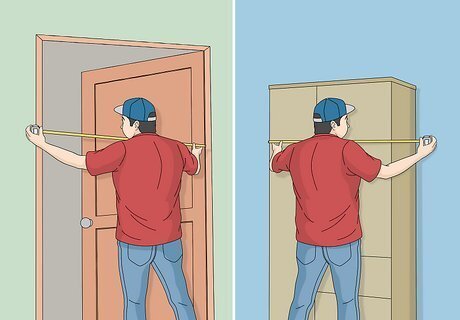
Plan and clear the route where you’re moving your furniture. Decide where you want to place the furniture when you’re finished moving it, and plan out the path you’re taking. Measure the dimensions of your furniture as well as any doorways or hallways to ensure the pieces will fit. Then, clean up any clutter and move objects out of the way so you have the most space to move your furniture. Try to find the shortest distance so you don’t have to carry heavy furniture for longer than you need to.
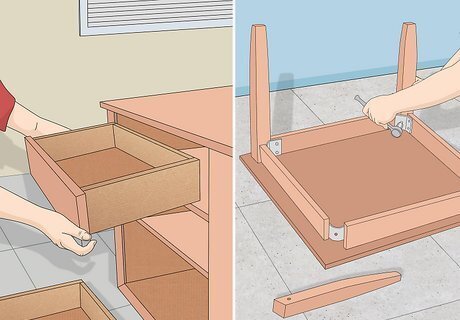
Disassemble your furniture as much as you can to make it lighter. Rather than trying to carry the entire piece of furniture, check if you can remove any legs, shelves, or drawers. Take the furniture apart as much as you’re able to and carry the individual pieces so they’re more manageable. Many times, all you’ll need is a screwdriver to take apart the furniture. Other times, you may need a hex wrench or pliers depending on the type of fasteners used.
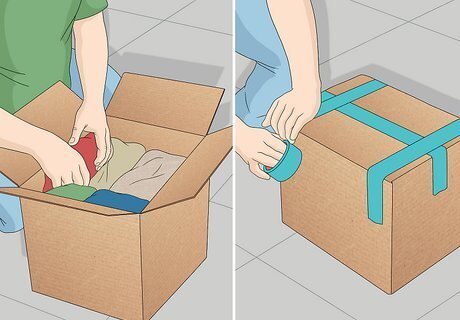
Take loose items out of shelves and dressers. If you’re moving a heavy dresser or bookcase, take everything out from the drawers and off the shelves. Pack the items in boxes and transport them separately so you’re not adding extra weight to the furniture.
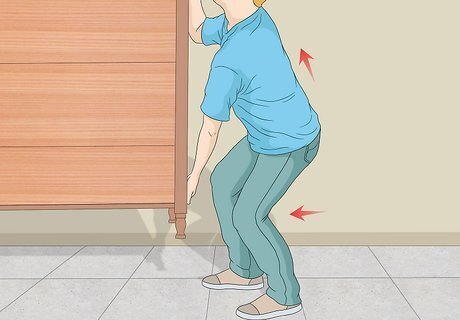
Lift with your legs instead of your back. Use proper lifting form by keeping your back straight and bending at the knees. Keep your feet pointed toward the piece of furniture. Tighten your core muscles and slowly straighten your legs to lift the furniture up. Avoid twisting or turning your upper body while you’re carrying the furniture so you don’t injure yourself. If your furniture is large, awkwardly shaped, or too heavy for you to lift by yourself, ask a partner to help you out. Bending at the waist and lifting with your back can cause serious strain or injuries. Your legs are stronger and help you maintain your center of gravity, so lifting with them protects your back muscles.
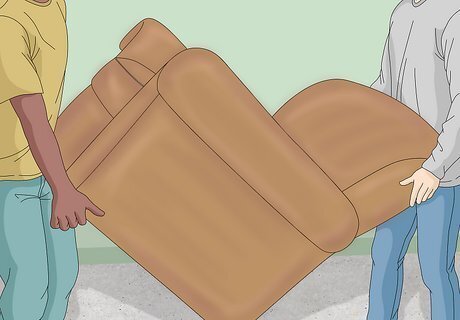
Carry tall pieces using the high-low method. When you have tall bookcases or long sofas, work with a partner to carry them. Tilt the furniture backward so one person holds onto the top of the piece and the other person carries it from the bottom. That way, the furniture’s center of gravity is more balanced so it’s easier to lift and carry. Using the high-low method also works great for moving heavy furniture upstairs because the angle you’re holding the piece is usually the same as the stairs.

Turn chairs and sofas on their side to hook them around doorways and corners. If your chair or couch is too wide to fit through a doorway or hallway corner normally, turn it on its side so it makes an L-shape. Maneuver the seat through the door or around the corner. Then, turn the chair or couch to hook it around the corner. After you get your furniture through, tilt it back to its normal position and carry it as normal. Some chairs and couches have removable backrests so they’re easier to move through tight halls or doorways.
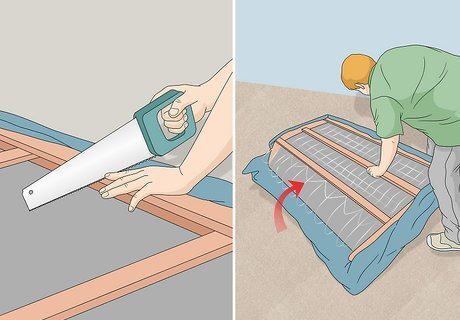
Saw and fold a box spring in half to fit it through tight spaces. If a box spring is too large to fit in a tight space, start by removing the staples on the bottom with pliers and taking off the fabric. Use a handsaw to cut through the middle of the wooden supports on the long sides of the box spring. Fold the box spring like a book and hold it closed with a bungee cord. When you’re finished moving the box spring, unfold it and screw the wood pieces back together. Some box springs may have reinforcement bars made of metal or wood running through the middle. Remove or cut through the reinforcement bar as well, or else you won’t be able to fold the box spring.
Helpful Equipment for Moving Heavy Furniture
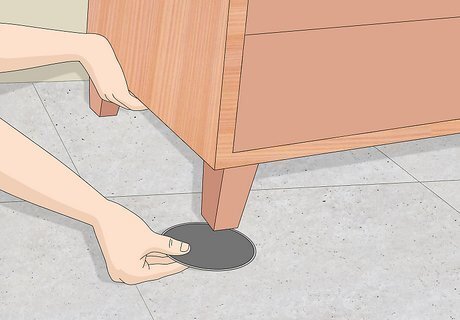
Place furniture sliders under the legs or corners of heavy pieces. Furniture sliders are either made of fabric or slippery plastic to reduce friction while you’re moving heavy items. Lift the corner of your furniture up just enough to place a slider underneath the leg or corner. Once you have sliders under each corner, push the furniture so it glides easily across the floor. Push on a lower section of the furniture to prevent tall pieces from tipping over. If you don’t have any furniture sliders, magazines with glossy covers also help reduce friction so it’s easier to move your furniture on your own.

Set your pieces on moving blankets to pull them easily. Moving blankets have thick padding and are usually used for wrapping furniture, but they also help heavy items slide across the floor. Lay out the blanket on the floor, and set the furniture down on top. After that, simply pull the edge of the blanket to drag the furniture instead of carrying it.
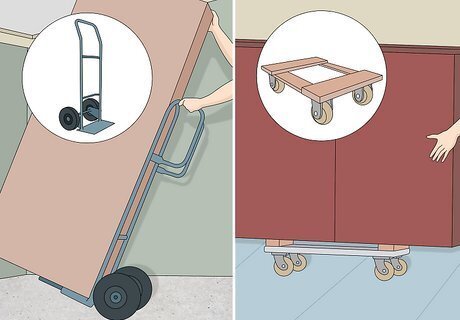
Roll heavy furniture around on a hand truck or moving dolly. When you have furniture that’s boxy or tall, like dressers or bookcases, use a 2-wheeled hand truck. Set the piece onto the hand truck’s platform. When you’re ready to move your furniture, tilt the hand truck down and roll the furniture away. If you have an awkwardly-shaped piece of furniture or one that’s too tall for the hand truck, lay it on a 4-wheeled square moving dolly so you can easily roll it around on the floor. If you have trouble tilting the furniture on a hand truck, it may be too heavy. Use a dolly instead to avoid having your furniture fall on top of you. Hand trucks work well for moving heavy furniture upstairs. If you’re going upstairs, strap the furniture to the truck and stand on the first step. Walk backward up the stairs and pull the hand truck up 1 step at a time. If you’re moving downstairs, slowly roll the hand truck down 1 step at a time.

Carry bulky items with a partner using a shoulder dolly. Shoulder dollies require 2 people, and they wrap around your back and have a lifting strap that slings underneath the furniture. Slide on the harness and place the lifting strap underneath the piece of furniture. Make sure you both adjust the harnesses so you and your helper have equal amounts to distribute the weight. Keep your arms straight and push on the furniture. Straighten your legs and slowly carry the furniture. Shoulder dollies work great as a sling to carry a mattress without handles. Shoulder dollies do not work for carrying heavy items upstairs because the person on the bottom will support most of the weight.
Protecting Your Furniture & Home
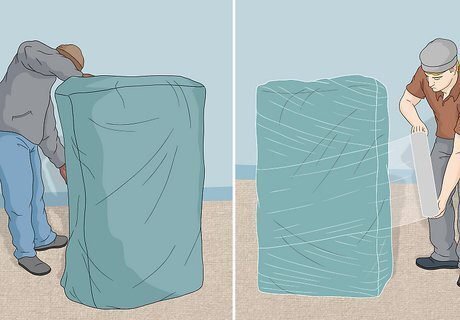
Wrap furniture in blankets and stretch plastic wrap. Start by draping moving blankets over your furniture so that they hang evenly on each side. Then, secure the blankets in place with a few tight layers of stretch plastic wrap. That way, you won’t get any marks on your furniture and they’re less likely to leave scuffs or damage on your walls or floor. Avoid using packing tape to secure the blankets because they may leave a sticky residue. If you don’t have moving blankets, any large soft blanket will work in a pinch.
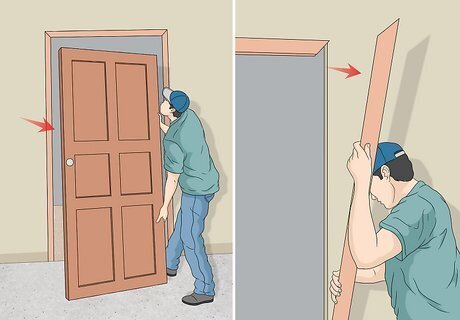
Remove doors and moldings to have more space to maneuver. If your furniture is too wide to fit through the doorway while its still on the hinges, simply pop out the hinge pins and set the door aside. If the doorway is still too narrow, take out the trim by slicing through the caulking with a utility knife. Then, use a pry bar to separate the trim from the wall. Install the trim pieces back around the door once you’re finished moving your furniture.
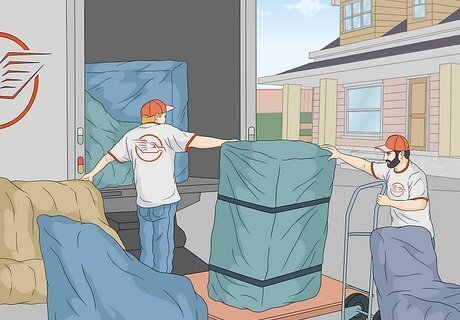
Hire professional movers if you’re worried about damaging your furniture. If you’re not able to find anyone to help you move, or if you’re concerned about damage, contact a few moving companies to receive quotes. Ask them if they have insurance in case of any damage to your furniture or home. Once you hire a service, the pros will take extra precautions to ensure your furniture is moved safely.

















Comments
0 comment